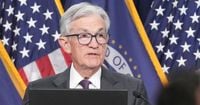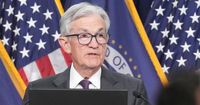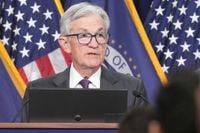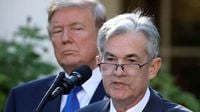The US Federal Reserve (Fed) is maintaining its key interest rate at a high level between 4.25 and 4.5 percent, setting the stage for a renewed confrontation with President Donald Trump. This decision allows commercial banks to borrow central bank money at this rate, a move analysts had anticipated.
In recent weeks, Trump has repeatedly urged the Fed to lower interest rates, arguing that such a reduction would stimulate economic growth. However, the Fed has justified its stance by indicating that the risk of higher inflation has increased, a situation it largely attributes to Trump’s aggressive tariff policies.
In March 2025, US consumer prices rose by only 2.4 percent year-on-year, a decrease from February's inflation rate of 2.8 percent. While this decline may seem promising, the sustainability of this trend remains uncertain, especially considering it occurred before the implementation of Trump’s extensive tariff package that imposed broad penalties on goods from around the world.
The Fed's primary responsibility is to keep inflation in check, aiming for a target inflation rate of 2 percent. High interest rates serve as a tool against rapidly rising consumer prices. By making loans more expensive, demand is dampened, which ideally leads companies to refrain from raising prices too aggressively. Additionally, higher interest rates encourage saving, though they can also slow economic growth.
In September 2024, following a significant inflation surge, the Fed initiated a shift in its interest rate policy with a notable cut of 0.5 percentage points. This was followed by two smaller reductions of 0.25 points each in November and December. Since then, the Fed has refrained from adjusting the key interest rate in light of persistent inflation concerns.
Looking ahead, the Fed projects an average key interest rate of 3.9 percent for 2025, suggesting that two minor rate cuts may occur later this year. This forecast places the Fed on a collision course with Trump, who is pushing for more substantial and immediate rate reductions to bolster the economy.
Trump has historically been an advocate for low-interest rates, believing they would support stock markets, make state financing through debt cheaper, and stimulate economic growth. Recently, however, he faced a significant setback as the US economy unexpectedly shrank in the first quarter of 2025. Economists had anticipated a slowdown, but not a contraction of this magnitude.
Trump attributed this economic downturn to the policies of his predecessor, Joe Biden, dismissing concerns about his own tariff strategy. Experts, however, warn that Trump’s trade policies could negatively impact economic performance and push prices higher in the months to come.
Fed Chairman Jerome Powell has faced scrutiny from Trump, who has publicly criticized his approach to interest rates. Trump stated, "I believe I understand much more about interest rates than he does," a comment reflecting his frustration over the Fed's reluctance to lower rates quickly.
Despite Trump’s pressures, Powell has made it clear that a swift interest rate cut is unlikely, primarily due to the uncertainties surrounding the impacts of Trump's tariffs. Since taking office, Trump has imposed high tariffs on goods from various countries, leading to considerable uncertainty in the market, which is one of the strongest drivers of price increases.
While the inflation rate has eased somewhat, the Fed remains cautious. The March inflation figures were still influenced by the pre-tariff environment, and the true impact of Trump's policies on inflation and economic growth is yet to be fully realized.
As the Fed navigates these challenges, it must balance the need to control inflation with the potential economic repercussions of high-interest rates. Powell’s recent statements indicate that the Fed is prepared to consider the effects of tariffs on growth, inflation, and employment before making any decisions regarding interest rate reductions.
Trump has also hinted at the possibility of firing Powell, a threat he later retracted. The President likely understands that such an action could lead to significant turmoil in the bond markets and undermine his own position. The bond market holds considerable power in tempering Trump's influence over the Fed.
Powell's second term as Fed Chairman is set to conclude in May 2026, during which he will likely continue to face pressures from the White House. Even as Powell resists the political pressures to lower interest rates, he inadvertently provides Trump with a scapegoat for any economic downturns, allowing the President to deflect blame away from his own policies.
As the situation unfolds, the Fed's decisions will be closely watched, not only for their immediate economic implications but also for their potential to shape the political landscape as the nation approaches the next election cycle. The interplay between Trump's administration and the Fed will remain a critical focal point for economists and political analysts alike, as both sides navigate the complex dynamics of monetary policy and economic performance.







